No products in the cart.

Interview with a Dance Photographer
Reading Time: minutes remaining
Dance event photographer, Brad Whelan (famous for his signature BW watermark) gives us the inside scoop on his photography and some hints for dancers to get their best moments captured.
CC: Tell us about your photography business?
BW: While I’m now based in Australia, I find myself in another country about 75% of the time. I shoot mostly West Coast Swing conventions, but also the occasional Ballroom showcase or Lindy Hop competition. I also shoot from 5-10 weddings a year, mostly in the US and Australia.

CC: Tell us about your dance background?
BW: I was 20 when I started dancing Swing (and a little Country Western) in California in 1999. I was very much the casual social dancer (going to maybe 5-7 conventions a year) on and off until 2009 when I started delving into dance photography. By the time I evolved into a professional photographer (Aug 2011), I was probably going to more like 30 events a year.

As the years went by, I became more and more competitive: I did quite well on the social competition floor, but have yet to get around to doing routines. While I’ve been working a lot harder on my dancing these last couple years, I suppose I am still what most people would consider an “un-trained” dancer.
CC: Though “untrained”, you have a natural talent. How do you think your skills as a dancer contribute to your photography?
BW: It makes a huge difference. I understand the movement, I can predict flow and musical moments, and even outside the swing world, I find myself being able to quickly adapt almost immediately to style of dancing foreign to me. I will say that in the West Coast Swing world, it also helps that I have studied just about every competitive high-level dancer, and personally know many of them quite well. So that gives me an additional edge in positioning myself and capturing the moment at just the right instant.
CC: What is your favourite type of subject/context/style to shoot?
BW: In truth I don’t have a favorite style. People, particularly happy people, seem to be what I like to photograph the most. That’s one good thing about shooting dancers. It’s hard not to smile when you’re dancing. ?
CC: What do you think makes your photos stand out? What’s your “signature” element?
BW: I think there are a fair few things that I do differently than most. But two come to mind immediately: First, I am not trying to shoot poses and lines. I am trying to shoot moments; expression. To do that I tend to get much closer in on my subject, usually just focusing on their faces and upper body.

The other thing is that I am usually out on the floor, in the trenches with the dancers. As far as I know, I was the first photographer to actually go out amongst the dancers and shoot them from only a few feet away. I was always frustrated with seeing other photographers standing (or sitting) on the sides with a monopod, just firing away, hoping to get a shot of a dip or a drop. I want the dancer to know that I am there, to know that I am taking their picture. Then rather than having to wait to “catch” a moment, often the dancers will just create one for me, or at the very least, smile, and stand up straight, since they know they’re on camera. ?
I see other photographers trying to shoot from the floor now, but I should point out that there is a subtle art to being both on the floor and out of the way of dancers and judges. Very rarely do I bump into a dancer or judge while shooting, because I am super conscious of the judges’ line of sight, and the dancers’ real estate on the floor. It’s a whole different kind of floorcraft. I feel like a lot of photographers see me doing this copy the strategy without realizing how much effort goes into being unobtrusive on the floor.
CC: If you could “direct” social dancers to dance for your camera, what advice would you give?
BW: Kind of a tough question, actually. The reality is, I really shouldn’t be having a distracting impact on their dance, though I know that this happens quite a lot. (Worth it) When I notice someone is losing connection with their partner in order to “pose” for me on the floor (especially in competition), I always point my camera elsewhere.

Not only to help them focus, but also because I don’t need that – I’m looking for awesome candids, not forced poses. Really what I like is just that they are aware that I’m there. So maybe it means opening up to me in body position, drifting closer, even looking my way with a wink or a smile, just as long as it doesn’t detract from the dance. The judges are still watching, after all.
CC: Same question, for routine dancers.
BW: I’m glad you rephrased this for routine dancers, because it really is a totally different situation. I’ll give you my top 3 requests:
First, it is always helpful if I see the routine before it goes to the floor. I can’t always make floor trials, so even just grabbing me before hand and explaining the song and when and where some key moments occur is helpful. In fact, that’s usually what happens with you, Tessa, since I can rarely make Showcase floor trials.
Second, I recommend when they are running their floor trials to ask me what I think of their starting positions (whether to start more forward, left, right, etc.).

Sometimes dancers are so concerned with getting the routine right, they don’t realize they never made it to the front of the floor, or that the entire dance was left of center. You’d be amazed at how often people’s shots (and their results) are negatively affected because they just started too far away. Not everyone has had the advantage of a good coach to guide them in this, so I can help with this part.
Finally I would advise them to stretch out their moments as long as possible. This doesn’t mean changing the choreography. It just means that too often I see routines with great potential moments that are squandered because the couple is too concerned with getting to the next piece of choreo. If you can’t relish these moments longer, either the routine is too difficult, or it needs to be polished until it seems easy. Relaxed faces make for the best pictures, and allow you to show the emotion of the music. Thinking faces (“Ok what next?”) will not only look bad on camera, but also in the judges’ eyes.
CC: Is there anything you wish events would do to make the photography experience/product better or easier?
BW: 1.Lighting
2.Lighting
3.Lighting
Know that the photographer and videographer are your main source of marketing material. I love being consulted when an event director is setting up a ballroom, or even the chairs for a Jack and Jill. Make the photographer a priority when comps are on by giving them a central, unobstructed, and possibly raised position to make it more possible for them to get an amazing shot. Any event director I work for is welcome to contact me before booking their lighting package.

CC: Any great stories to share? Funny/touching/thrilling moments etc.
BW: One of the biggest perks to this job is that I get the best seat in the house at every major event. And even though I am working, I am really just a guy in the front row cheering on his friends, and occasionally I am moved to tears when I see them perform.

Probably my favorite moment was when Gary McIntyre and Susan Kirklin danced their famous “balloon routine.” It was Sunday at the Open and Cabaret was the last division of an incredibly long weekend. I remember that I had slept about two hours a night and was utterly exhausted by the time they came up (couple number 17 of 20). I just wanted the day to be over. And then I watched from inches away, this simple, beautiful, funny, heartbreaking, joyful routine unfold in front of me. Every piece of emotional strength I had left washed out of me in a flood of tears. I kept shooting, but had no idea if the shots were even in focus (they totally were). When they finished I leapt out of my chair and moved to the back of the floor to get the shot of their standing ovation, still not really able to see what I was shooting. When I got back to my chair, Michael Kheim, who was judging behind me, handed me a box of tissues, laughing, tears in his own eyes, and said, “You need these more than I do.”
I do love my job.
New to the Coach’s Corner? Don’t forget to check out the full library of invaluable articles!
Join our Facebook group to get instant updates when new articles and “Ask the Coach” tips are posted!
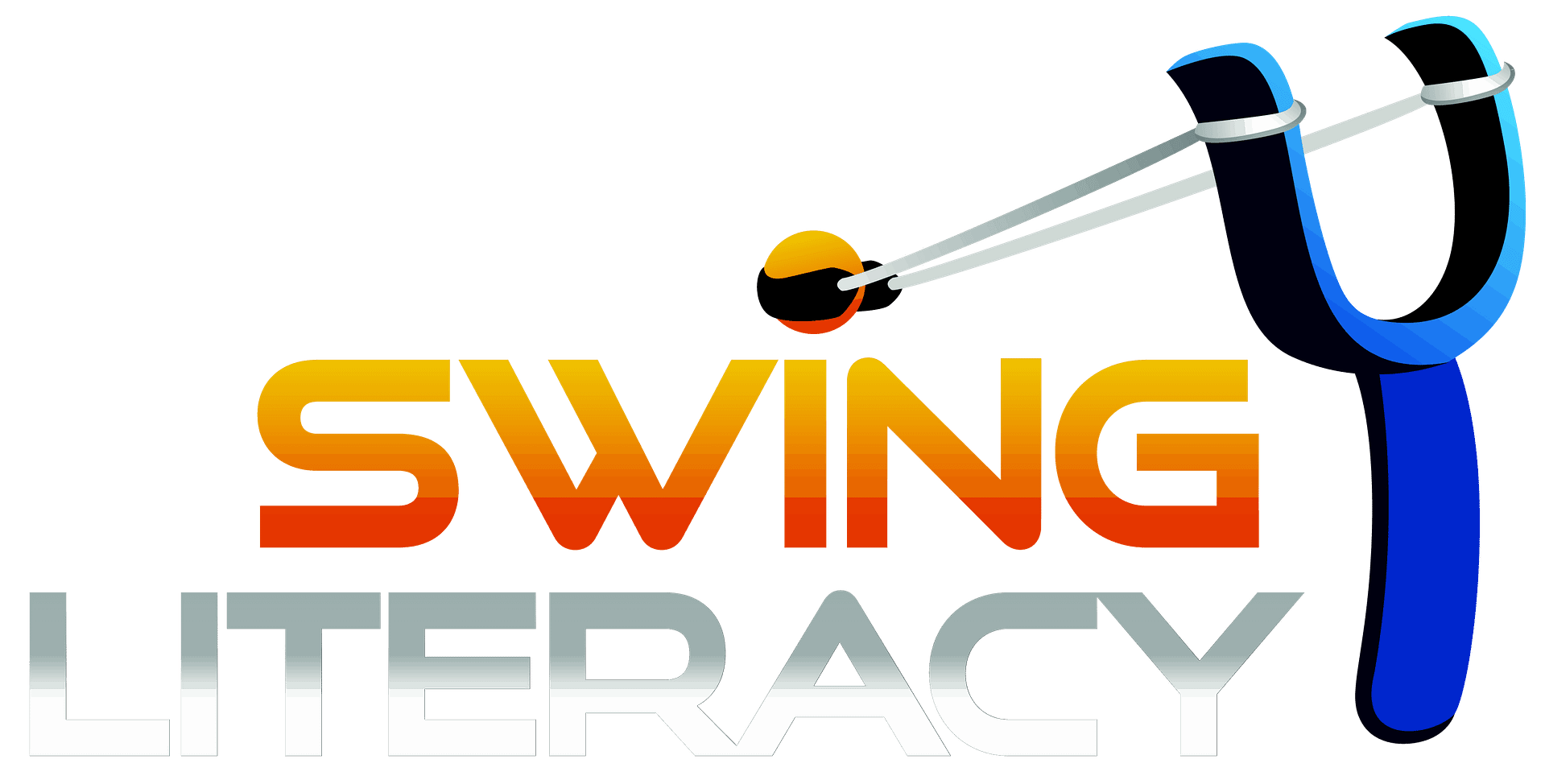
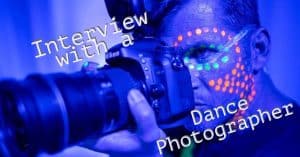 Dance event photographer, Brad Whelan (famous for his signature BW watermark) gives us the inside scoop on his photography and some hints for dancers to get their best moments captured.
Dance event photographer, Brad Whelan (famous for his signature BW watermark) gives us the inside scoop on his photography and some hints for dancers to get their best moments captured.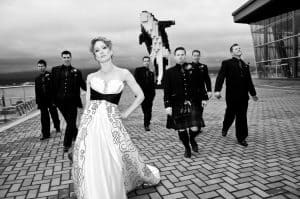 CC: Tell us about your dance background?
CC: Tell us about your dance background?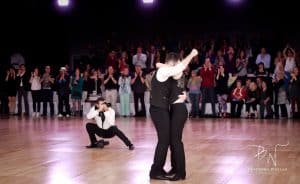 BW: I think there are a fair few things that I do differently than most. But two come to mind immediately: First, I am not trying to shoot poses and lines. I am trying to shoot moments; expression. To do that I tend to get much closer in on my subject, usually just focusing on their faces and upper body.
BW: I think there are a fair few things that I do differently than most. But two come to mind immediately: First, I am not trying to shoot poses and lines. I am trying to shoot moments; expression. To do that I tend to get much closer in on my subject, usually just focusing on their faces and upper body.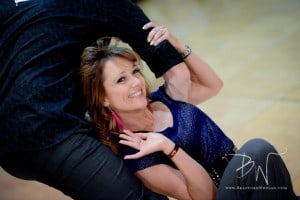 CC: If you could “direct” social dancers to dance for your camera, what advice would you give?
CC: If you could “direct” social dancers to dance for your camera, what advice would you give?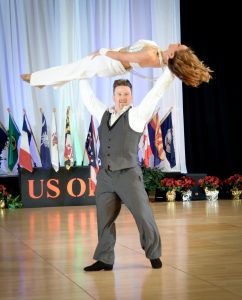 CC: Same question, for routine dancers.
CC: Same question, for routine dancers.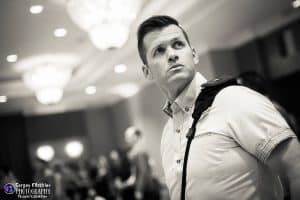
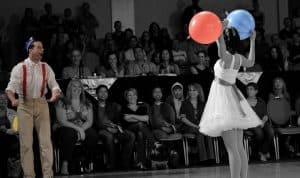 BW: One of the biggest perks to this job is that I get the best seat in the house at every major event. And even though I am working, I am really just a guy in the front row cheering on his friends, and occasionally I am moved to tears when I see them perform.
BW: One of the biggest perks to this job is that I get the best seat in the house at every major event. And even though I am working, I am really just a guy in the front row cheering on his friends, and occasionally I am moved to tears when I see them perform.
I would like to say that I think this is a great interview and I thank you for this.
I’ll also add that I’ve always considered myself an extremely un photogenic person and I even had a photographer tell me that same thing once, years ago. It made it that much harder for me to connect with a camera. Brad may not remember this (and no he was not the photographer who said those things) but about 3 years ago he walked by at an event and stopped to say hello and give me a hug. Very gently he mentioned a few things to me in general conversation that helped me not only connect more with a camera but with my audience as well. It wasn’t anything specific but rather very good and gentle asvice. I’m no longer as shy but I do still struggle with not being goofy or silly when I see a camera. That’s just my personality! I don’t do sexy! Lol
So a big thank you to someone very special in our community who made me feel comfortable and pretty!
Such an insightful interview! I loved hearing about the guest’s unique perspective and the journey they shared – it was both inspiring and informative. The questions were spot-on and really brought out some thought-provoking responses. Looking forward to more interviews like this!